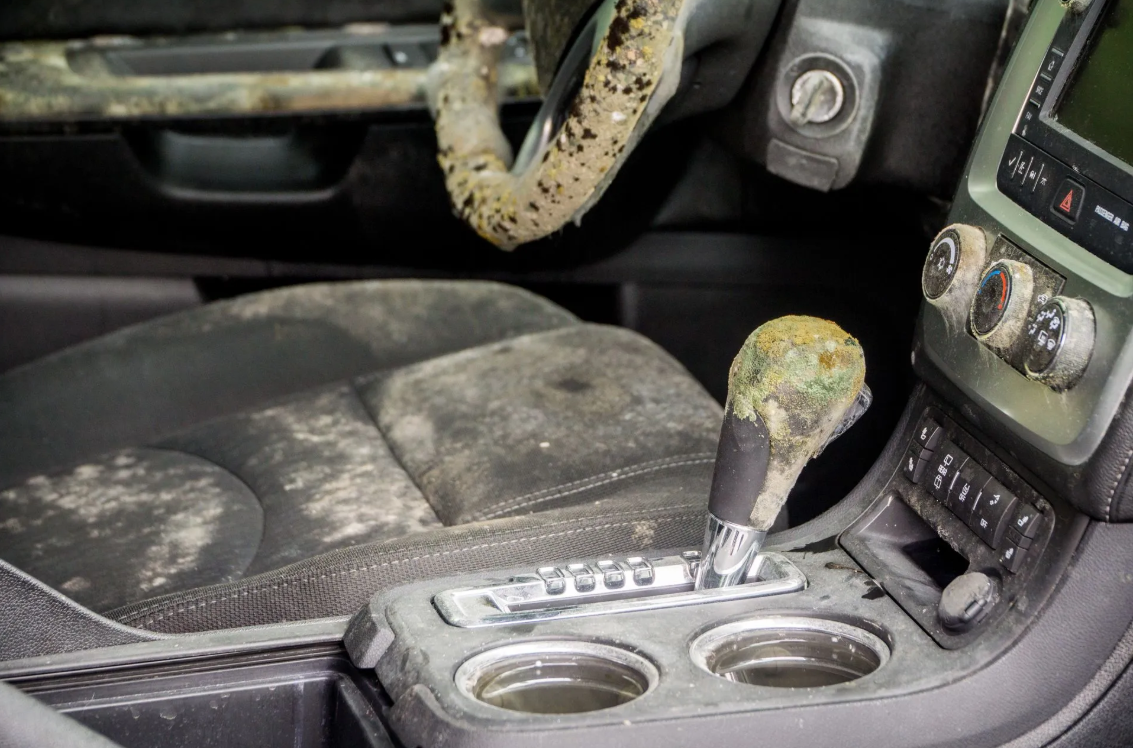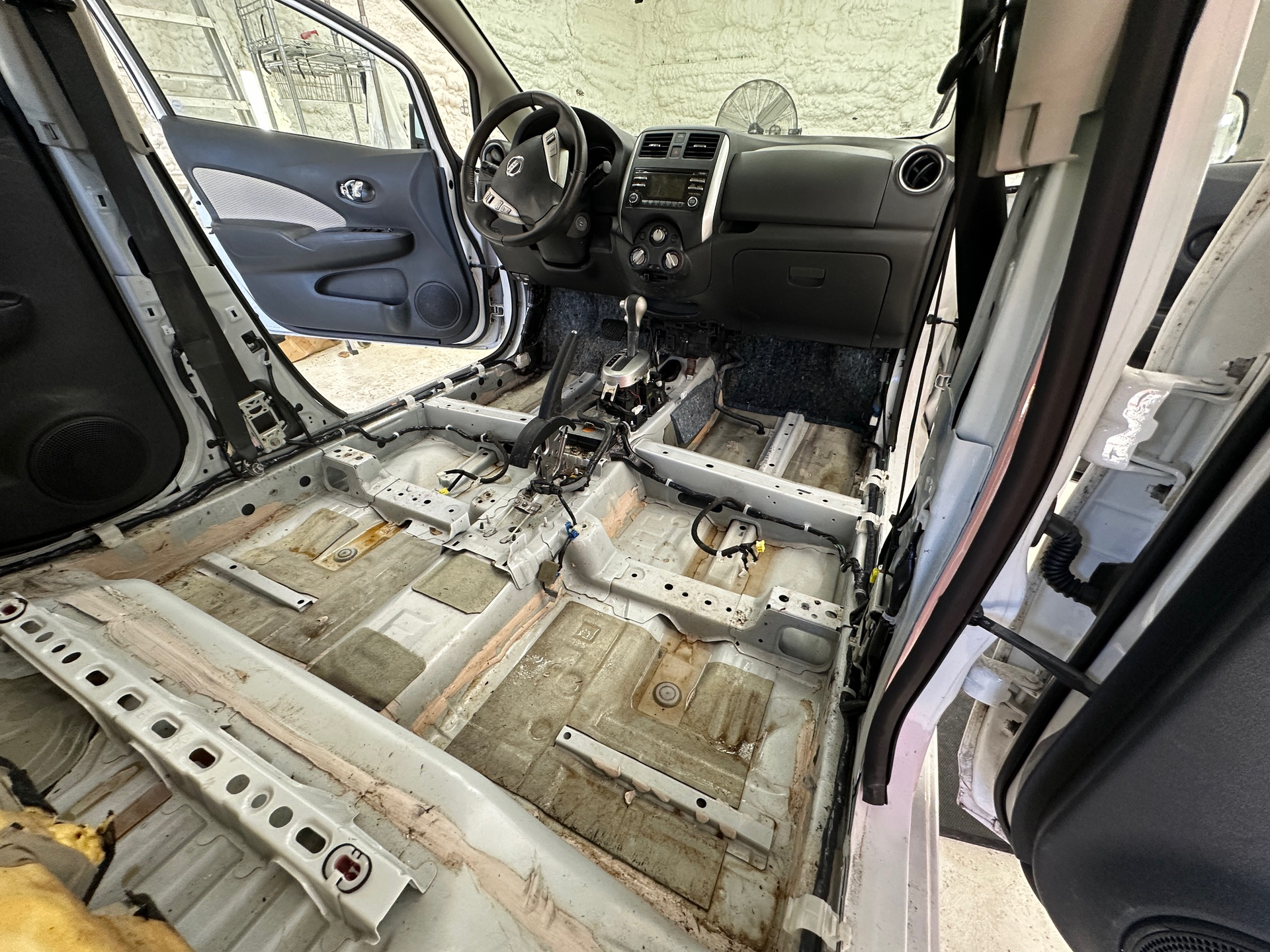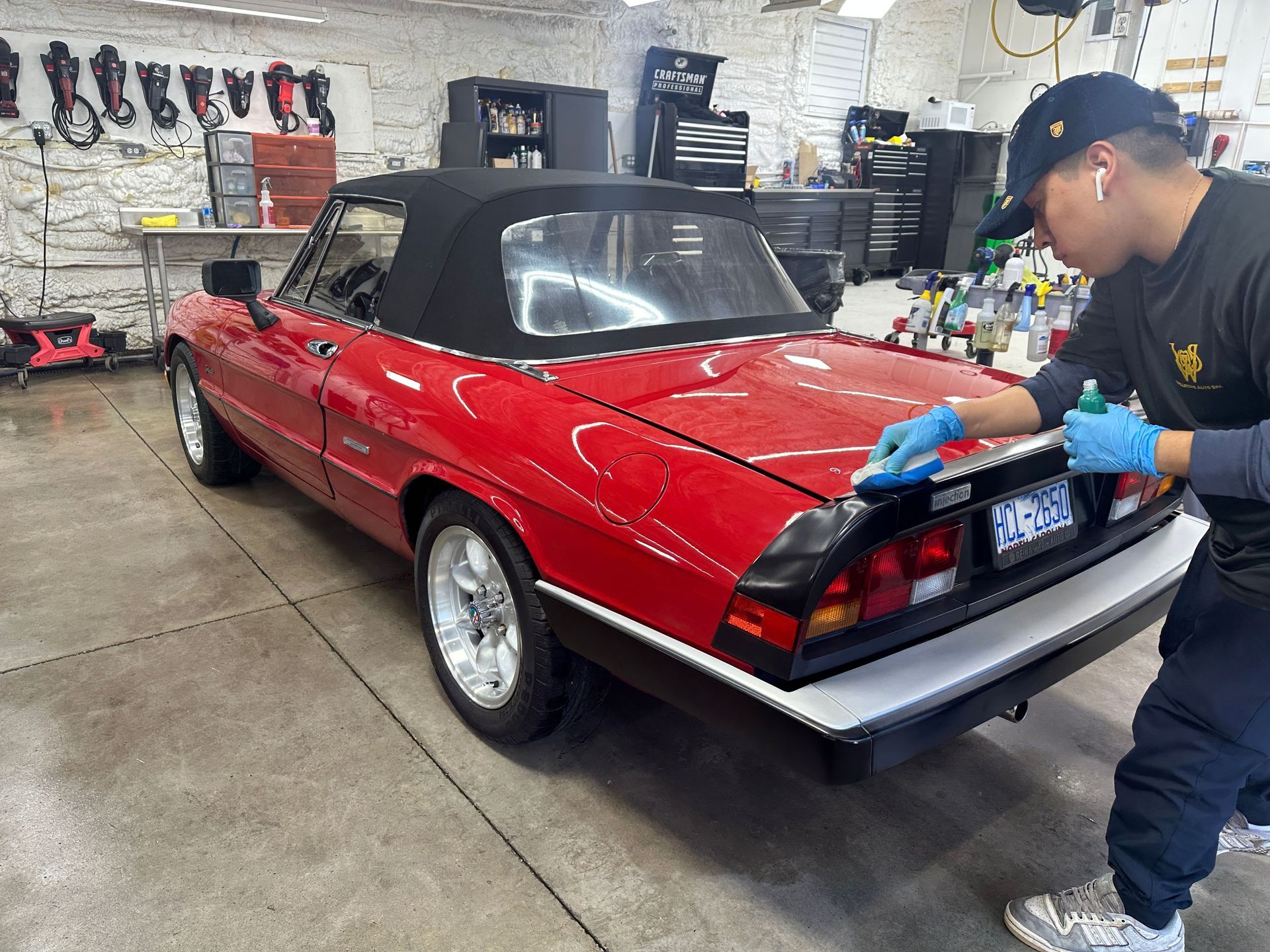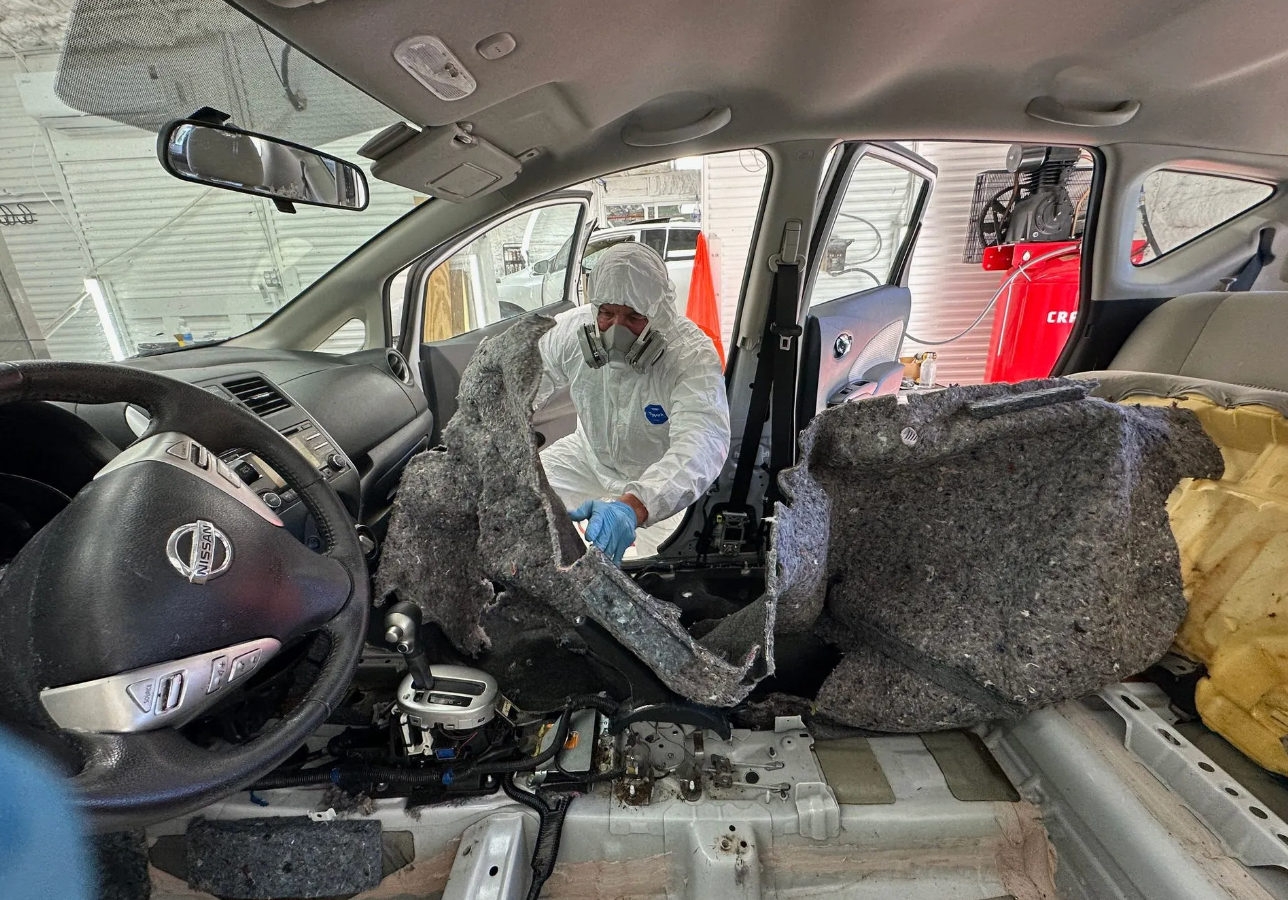Importance of Water and Mold Remediation for Your Vehicle
GET A FREE ESTIMATE
Routine oil changes, tire rotations, and occasional detailing probably come to mind when you think about keeping your car in top shape. But did you know that one of the most subtle threats to your vehicle's health can be found just beneath the surface? Water and mold can quickly turn your ride into a breeding ground for bacteria and deterioration if not addressed promptly. You might be surprised to learn that mold can start growing within just 24-48 hours after water intrusion!
That's why every vehicle owner must understand the importance of water and mold remediation—not just for aesthetics but for safety and longevity as well. By recognizing the risks early on, you'll keep both your car looking sharp and your passengers breathing easy. So let's dive in and explore why tackling these issues is more important than you may have realized!
Why Water and Mold Remediation Matters
Many vehicle owners often underestimate the severity of water leaks and mold growth, leading to significant long-term consequences. Once water intrusion occurs, it's crucial to act quickly because mold can begin to develop in as little as 24 to 48 hours. This rapid growth can create an unhealthy environment within your vehicle, posing immediate health risks. For those sensitive to mold, exposure can trigger allergic reactions that range from mild sneezing to severe asthma attacks.
Around 10% of the population may experience respiratory issues due to mold exposure—making awareness of mold presence vital.
When considering how minor issues escalate into larger problems, think about this: a seemingly small leak from a sunroof or compromised window seal can lead to significant water accumulation inside your car. The damp interior becomes an ideal breeding ground for harmful mold spores, propagating both health concerns and aesthetic damage to the upholstery.
If untreated, this reduces comfort and vehicle resale value by 20%. Moreover, half of all vehicles subjected to water damage will likely encounter issues with their electrical systems; these malfunctions often lead to costly repairs.
Wellstone Auto Spa specializes in addressing these concerns with comprehensive water and mold remediation services tailored specifically for vehicles. Using advanced techniques that include identifying moisture sources like worn weather stripping or cracked windows are a first step in protecting your investment.
The process doesn’t just stop at detection; complete mold eradication is paramount. Professionals utilize potent mixtures on the upholstery and hard surfaces to eliminate harmful spores effectively.
After thorough cleaning, advanced drying techniques are employed—special heaters and fans ensure all moisture is removed. This step is crucial because remaining dampness could allow mold to return swiftly after remediation efforts have been made. Following drying, we deploy chlorine dioxide gas for an added sanitization measure that guarantees your vehicle not only looks clean but is also safe for you and your passengers.
Regular inspections for signs of water ingress are crucial in preventing mold growth. Make it a habit to check seals regularly, especially before winter months when rain and snow can exacerbate existing vulnerabilities in your vehicle's structure.
By being proactive and seeking professional help as soon as you discover any leaks or mildew smells, you're safeguarding both your vehicle's condition and your family's health.
Identifying Signs of Moisture and Mold
Detecting moisture and mold in your vehicle isn’t always straightforward; sometimes, it creeps in quietly and only makes its presence known through subtle signs. For instance, if you step into your car and notice a musty odor, this should immediately trigger your alarm. That damp smell can indicate trapped moisture, creating the perfect breeding ground for mold. Remember that mold can proliferate rapidly; statistics show it can develop within just 24-48 hours of water exposure! Hence, addressing these odors correctly right away is crucial.
Red flags to be aware of include:
- Musty Odor: This pervasive smell often signifies the presence of mold or mildew lurking somewhere hidden.
- Discoloration: Dark spots appearing on upholstery or carpet are common indicators of mold growth, signaling previous water intrusion.
- Condensation: If you've noticed your car's windows fogging persistently, especially during colder months, this might be a sign of excessive humidity inside the vehicle.
- Allergy Symptoms: Sneezing or coughing while you're inside the car could hint at a problem; the presence of mold spores can aggravate allergies.
These symptoms may seem innocuous, but ignoring them can lead to bigger issues down the line. If any of these signs appear regularly in your vehicle, it's wise to act swiftly and check for potential water intrusion or leaks. Take some time to inspect your car; check behind seats, under mats, and even in the trunk area where moisture might accumulate unnoticed.
Acting upon these indicators not only extends the life of your vehicle’s interior but also safeguards you and your passengers from health hazards. Maintaining vigilance allows for cohesive management of remediation efforts when necessary.

The Remediation Process Explained
When it comes to mold remediation, the process is not just about cleaning; it's a systematic approach aimed at ensuring both safety and thoroughness.
It all begins with an in-depth inspection. This step is crucial as experts identify all sources of water entry and assess the extent of mold growth. Imagine this as detective work where every nook and cranny of your vehicle is scrutinized for signs of moisture—perhaps inspecting beneath the seats, within the trunk, or even under floor mats. If you’ve already experienced leaks or flooding, this initial phase will guide the entire remediation process.
Step 1: Inspection
During the inspection, professionals may use specialized tools that detect hidden dampness in hard-to-reach areas. This step ensures that no hidden pockets of mold are left untreated, which could lead to further complications down the line. Once potential sources are identified, a robust plan can be formulated to tackle them efficiently.
Step 2: Water Removal
Industrial-grade vacuums and dehumidifiers are deployed to extract any standing water effectively. This is essential because lingering moisture fosters an environment conducive to mold growth. Picture this: if water remains trapped beneath your vehicle's seats or carpets, it sets the stage for mold to take hold again rapidly. Custom-fit dehumidifiers ensure that every drop is accounted for, providing peace of mind that your vehicle’s interior is returning to its dry state.
Step 3: Cleaning and Disinfecting
Professionals apply solutions like chlorine dioxide and hydrogen peroxide for comprehensive sanitization. These powerful compounds not only kill existing mold spores but also prevent new colonies from establishing themselves. This step often involves scrubbing surfaces and airflow systems to eradicate pesky spores that would otherwise lay dormant and reemerge later.
Step 4: Drying
Post-cleaning, it’s time for drying—an equally vital step in the process. Unlike a simple towel off, specialized heaters and fans are used to ensure that every inch of your vehicle’s interior dries thoroughly. Think about it this way: a perfectly clean car that isn’t properly dried could still facilitate future mold growth! The aim here is to create an unwelcoming atmosphere for mold by effectively reducing moisture levels.
Step 5: Post-Remediation Testing
Finally, we arrive at post-remediation testing. This step involves conducting air quality tests to confirm the absence of mold spores drifting through your vehicle’s cabin. If you've ever experienced allergies while driving or noticed a musty odor after a rainstorm, you know how important this final verification can be. Professional testers check the air quality to reassure you that your space is safe again.
While some steps can be done at home, they lack the efficiency of professional services. Understanding these nuances enables you to make informed choices regarding how best to tackle remediation challenges.
DIY vs. Professional Help for Mold
When faced with a mold problem in your vehicle, it's tempting to grab some common household items and get to work. DIY solutions may seem appealing due to their lower initial costs. After all, who wouldn't like the idea of using vinegar or bleach to battle the mold lurking in hidden corners? However, while these methods can be effective for minor issues, they often fall short when it comes to fully addressing the root cause of the mold's resurgence. Many at-home remedies merely mask the symptoms of mold instead of eliminating it entirely.
On the other hand, tackling mold through professional services offered by Wellstone Auto Spa—ensures a thorough and effective approach. Professionals utilize advanced techniques and specialized equipment designed specifically for mold eradication. This means they can identify and eliminate the moisture sources contributing to your problem. While this option may require a higher upfront investment, the long-term benefits can vastly outweigh those initial costs. Professionals who specialize in remediation will not only give you peace of mind but also ensure a healthier environment within your vehicle.
Ensuring Long-Term Vehicle Safety
To truly secure your vehicle against the risks associated with mold and water damage, it's important to establish an ongoing maintenance routine. Regular upkeep is not just a matter of aesthetics; it plays a vital role in preserving your vehicle’s integrity and ensuring the well-being of its occupants. The sooner you identify potential problems, the more manageable and less costly they will be to resolve. This is where Wellstone Auto Spa comes into the picture.
Scheduling regular maintenance checks with Wellstone Auto Spa can save you from future headaches. With professionals trained in identifying early signs of mold or water damage, you'll gain peace of mind knowing that your vehicle receives thorough inspections at set intervals. This proactive approach means you won’t find yourself in a position where minor issues escalate into significant problems that could threaten both the safety of your car and the health of its passengers.
If you're ready to take actionable steps towards safeguarding your vehicle from future mold and water-related hazards, visit Wellstone Auto Spa. Our expert team is eager to help you protect not just your car but also your health. By prioritizing regular maintenance and remediation practices, you're setting yourself up for a much safer driving experience. Contact Wellstone Auto Spa at (919) 797-0005 to request an estimate today!
Share with your friends
How Automotive Ceramic Coating Saves You Time and Money




